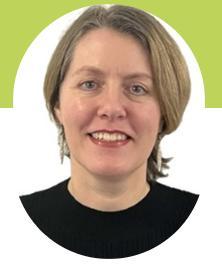“I wanted to do something that could change everything.”
The year was 2007. Solar power was growing quickly, but it wasn’t profitable. The future of the sector was unclear. This is when a 30-year-old Spanish industrial engineer named Dario Lopez took a big leap.
“I was studying for an MBA in Madrid and working in the car industry,” Lopez says. “Another student in my class had a vision about the solar industry and wanted me to join him. So I said, ‘Let’s do it.’”
Lopez joined that fellow student at his family’s relatively new company, Solaria. Now, 17 years later, Lopez is Solaria’s general manager, overseeing 250 employees and one of the biggest solar power producers in Europe. “I have no regrets about leaving the car industry,” Lopez adds. “I wanted to do something that could change my country, change the planet, change everything.”
Solar power could, indeed, change everything. The planet, climate change, human history. By ending our reliance on fossil fuels. And if it seems to you that solar power is already fairly common, prepare for a dramatic expansion of its place in your life. In 20 to 30 years, there will be solar panels everywhere — on the roofs of homes, schools and buildings, on cars, floating on lakes, in big solar farms on the oceans. Solar panels will be much more efficient, and solar cells will be integrated into the surfaces of phones, laptops, watches, tablets, headphones and other devices. We will charge these devices by setting them on a table during the day. Buildings will be covered in transparent solar cells that provide energy for entire neighbourhoods.
Photovoltaic, a fancy word for light and electricity
The modern solar panels used on home rooftops and in solar parks are mostly photovoltaic, which means they convert light into electricity. Photovoltaic panels started being developed in large quantities after the oil crises of the 1970s, which led governments and businesses to direct more research towards alternative energy sources. Germany and Spain were staunch supporters of solar power installations in the early 2000s, setting fixed prices for electricity produced from solar power. Spain is a world leader today in solar installations. The country also has more sunshine than many other locations in Europe.
How solar panels make electricity:
- Absorbing sunlight: Solar panels contain light-absorbing cells that are usually made from silicon. When sunlight hits a solar cell, the light's energy is absorbed by the silicon.
- Generating the current: After the sun’s energy hits the silicon, it knocks electrons loose, allowing them to flow and create an electric current.
- Collecting the power: This flowing current is collected by metal contacts attached to the solar cell.
- Conversion for home use: This current is direct current (DC) electricity, which is different from the alternating current (AC) commonly used in homes. To make the electricity from solar panels usable for household appliances, it is passed through an inverter, which converts it into AC electricity.
Today’s commercial panels are about 18% to 22% efficient, which means they convert up to 22% of the sunlight that hits them into electricity. There are materials that can make panels more efficient, such as gallium, indium, arsenic or antimony, but they are much more expensive to manufacture and are mainly used in special applications such as satellites. Only small increases in the efficiency of silicon-based solar panels are expected in the near future. Solar panels on car roofs will not fully power a normal vehicle anytime soon.
“We’re seeing only gradual increases in efficiency and incremental innovation in solar panels because this is now a mature sector, but production and installation are growing rapidly,” says Marc Dufour, an engineer and senior energy specialist at the European Investment Bank.
- Read about the future of wind power
Putting more energy into parks
The European Investment Bank has made big changes in its support for solar power.
About 20 years ago, the Bank was mainly supporting “concentrated solar power.” These types of solar panels use mirrors to concentrate sunlight onto a receiver, heating up a fluid and creating energy. One of the earliest big solar projects the Bank financed is near Ouarzazate in south-central Morocco. This site, which received a package of European Investment Bank loans and EU grants during various phases over the past decade, is one of the largest solar operations in the world, covering more than 3 000 hectares. Part of the plant uses solar panels to collect heat, produce steam and turn turbines, while other parts use photovoltaic panels that convert desert sunlight directly to electricity.
The Bank’s main solar investments today centre on the installation of photovoltaic panels. In 2023, the European Investment Bank invested €4.8 billion in solar photovoltaic projects.

Rooftops, not farmland
A more recent European Investment Bank deal is the €200 million loan in 2023 to the logistics company CTP to cover its buildings’ rooftops with solar panels.
This firm has 11 million square metres of rooftops in the Czech Republic, Slovakia, Hungary, Romania and the Netherlands. CTP hopes to create as much as 400 MWp of capacity by the end of 2026. MWp stands for “megawatt peak,” a measure of the output of power from sunshine. CTP estimates it could generate up to 10% of its profits from solar panels, if the company sells the electricity created from installations on the roofs of all its factories and fulfilment centres.
“Solar panels on rooftops do not use farmland,” says David González García, a lead engineer at the European Investment Bank. “This project creates a new use on top of something that’s already useful.”
For sheer size, it’s hard to beat the deal the European Investment Bank approved in 2023 with Solaria, the Spanish solar company. It’s €1.7 billion, to build more than 100 solar power plants in Spain, Italy and Portugal. The plants will be built over the next few years and produce an estimated 9.29 terawatt hours a year.
And even though Solaria’s parks won’t sit on rooftops like those of CTP, they won’t eat up all the land that could otherwise be used for farming. Solaria and other installation companies are developing parks that use unobtrusive cabling and mounting systems that sit higher off the ground to let livestock graze safely. This is important for countries like Italy, which has a lot of sun but whose state laws protect arable land.
“We have to evolve our types of solar installations and our locations to keep growing,” says Lopez, the Solaria general manager. “We have been very successful in Spain and Portugal, but we need to find ways to go to new places. We think Europe is the place to be because it has big goals for green power.”
Hemetsberger of SolarPower Europe encourages developers to promote “agri-solar” farming. Using 1% of arable land for solar parks in Europe would generate 900 gigawatts of electricity, while allowing farmers to use the same land, she says. The solar parks also can protect crops by shielding them from the harsh sun, reduce water evaporation, and give farmers an extra income.
European Investment Bank solar projects across Europe
- A gigafactory in Sicily will make a product that captures sunlight on both sides of solar panels
- An investment with Iberdrola, one of the largest utility companies in Europe, will help build 19 solar power plants
- A group of solar power plants in southern Croatia will help the country cut emissions by 45% by 2030
- Three big solar farms in western Macedonia are among the largest solar projects in Greece
- 66 small solar power plants in Poland will supply electricity to 19 000 homes
The future is floating solar
As the world races to cut emissions and meet goals such as the European Union’s net-zero carbon plan for 2050, floating solar photovoltaic projects will offer a big contribution, particularly in countries that don’t have a lot of open land or where solar plants compete with agricultural land.
“This floating tech development opens the doors for countries with land constraints to boost their sustainability goals,” says Valentina Puccini, a senior energy specialist at the European Investment Bank who quit a job in oil and gas nearly 20 years ago to work in renewable energy. “There aren’t so many floating solar parks in Europe just yet, but we’re starting to see some nice projects around the continent.”
Floating solar parks rest on large platforms held in place with cables attached to the beds of seas, lakes or reservoirs. The panels are coated to prevent rust.
According to a Nature study, covering 30% of the surface of the world’s 115 000 reservoirs with solar power could generate 9 434 terawatt hours of electricity annually. That’s more than triple the energy production of the European Union.
Floating projects the European Investment Bank is exploring include one on artificial reservoirs in North Macedonia and a large floating solar farm in the Haute-Marne region of northern France. The French project will supply power to about 26 000 people.
- See a slideshow explaining how floating solar parks are installed and held in place







